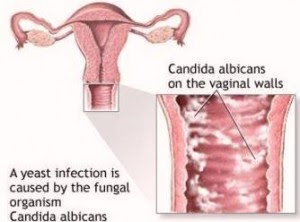Preeclampsia is widely recognized as a pregnancy complication, but few are aware that its effects can persist or even develop after delivery. Postpartum preeclampsia is a serious condition that demands attention to ensure maternal health and well-being.
What Is Postpartum Preeclampsia?
Postpartum preeclampsia occurs when a woman develops high blood pressure and signs of organ damage after childbirth. Though it often emerges within 48 hours postpartum, it can manifest up to six weeks later, making postpartum care critical.
Symptoms Onset Timeline for Postpartum Preeclampsia
| Time Period (Postpartum) | Percentage of Cases (%) |
|---|---|
| 0-2 Days | 50% |
| 3-7 Days | 30% |
| 8-14 Days | 15% |
| 15-42 Days | 5% |
Key Symptoms to Watch For:
- Severe headaches
- Vision changes, such as blurriness or sensitivity to light
- Swelling in hands and face
- Shortness of breath
- Nausea or vomiting
- Elevated blood pressure (140/90 mmHg or higher)
If these symptoms arise, immediate medical consultation is essential.
Why Does Postpartum Preeclampsia Happen?
The exact cause remains unclear, but researchers suggest that factors like genetic predisposition, vascular issues, and inflammation play a role. Women with a history of preeclampsia during pregnancy or underlying health conditions such as chronic hypertension or obesity are at greater risk.
Who Is at Risk?
Some women are more vulnerable to postpartum preeclampsia, including:
- First-time mothers
- Women with a history of preeclampsia or high blood pressure
- Those carrying multiples (twins, triplets, etc.)
- Women with underlying conditions like diabetes or lupus
Risk Factors Contribution to Postpartum Preeclampsia
Did you know?
Preeclampsia is more prevalent among African American women in the U.S. compared to other racial groups, highlighting the importance of tailored healthcare.
How Is It Diagnosed?
Diagnosis typically involves monitoring blood pressure and conducting urine tests to check for protein. Blood tests may also be ordered to assess liver and kidney function. Regular postpartum checkups are vital for early detection.
Treatment Options
Postpartum preeclampsia is treatable, but prompt intervention is crucial. Common approaches include:
- Medication: Antihypertensives to control blood pressure and magnesium sulfate to prevent seizures.
- Monitoring: Hospitalization may be required for close observation.
- Lifestyle Adjustments: Rest, hydration, and dietary changes can support recovery.
Outcomes of Early Intervention for Postpartum Preeclampsia
| Intervention Type | Success Rate (%) |
|---|---|
| Antihypertensive Medication | 80% |
| Magnesium Sulfate Therapy | 70% |
| Hospital Monitoring | 65% |
| Lifestyle Adjustments | 50% |
Real-world Case: Dallas, Texas
A 32-year-old mother in Dallas experienced severe headaches two weeks after delivery. A visit to the ER revealed dangerously high blood pressure. Early intervention with antihypertensives stabilized her condition, underscoring the importance of awareness and prompt action.
Long-term Implications
Postpartum preeclampsia isn’t just a short-term concern. It increases the risk of future cardiovascular diseases, such as stroke or heart attack. Regular follow-ups and lifestyle modifications are crucial for long-term health.
Preventing Postpartum Preeclampsia
While not entirely preventable, steps to reduce risk include:
- Maintaining a healthy weight through balanced nutrition and regular physical activity.
- Proactively managing chronic conditions with medical guidance and adhering to prescribed treatments.
- Attending all prenatal and postpartum checkups to enable early detection of complications.
- Keeping a detailed symptom diary and promptly reporting any unusual changes or concerns to healthcare providers.
Did you know?
According to the CDC, 60% of pregnancy-related deaths in the U.S. are preventable with timely care.
The Role of Postpartum Care
Despite its importance, postpartum care is often undervalued. Comprehensive follow-up visits allow healthcare providers to monitor for conditions like preeclampsia, ensuring early intervention.
How Postpartum Care Is Evolving
Programs like California’s Maternal Mortality Review have implemented strategies to improve maternal outcomes, such as enhanced training for healthcare providers, public health campaigns, and improved screening protocols for postpartum complications. According to a 2022 study by the American Journal of Obstetrics and Gynecology, states with similar review programs reported a 15% reduction in maternal mortality rates. These initiatives serve as models for national healthcare reforms and underscore the critical need for widespread adoption. For more details, visit California Maternal Quality Care Collaborative.
Editorial Advice
If you’re a new mother, prioritize your health as much as your baby’s. Stay informed about the risks of postpartum preeclampsia, attend follow-up visits, and don’t hesitate to seek help for unusual symptoms. Your health is the cornerstone of your family’s well-being.









